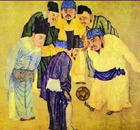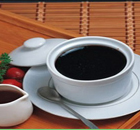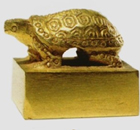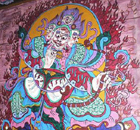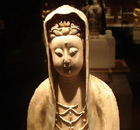Delicacies
Insides take pride of place on the local fried liver menu
By B.W. Liou (China Daily)
Updated: 2010-04-09 09:43
 |
Large Medium Small |

First a warning: this is not a place for the fainthearted. Nonetheless, the restaurant is packed day and night with locals, some bringing large metal pots, and for good reason, the food here is excellent - if you have the stomach for it.
Chao gan, or fried liver soup, reportedly dates to the Song Dynasty and was a cheap dish for the poor. That might explain why Yao Ji Chao Gan, located at Gulou Dong Da Jie, at the southeast corner of the Drum and Bell Towers, looks more like a canteen.
Upon entering, you'll likely run into an L-shaped line that stretches to the other end of the eatery. You order at the counter and get your food on a metal tray. Patrons politely jostle for seats at the community tables.
The main items on the menu are soups; one is dark and thick, filled with chunks of gritty liver and circles of soft but resistant intestines - one Beijing friend who was eating it for the first time said the texture was similar to pudding - another has chunks of pork intestine and lungs with a slight crunch from the bronchioles, and its taste is somewhere between stinky and pungent.
However, the use of innards does not end with these two traditional Beijing dishes.
The chao gan (3 yuan per small bowl) is actually boiled and mainly eaten as a snack. It's cooked with lots of chopped garlic that dents the gaminess of the buttery organs and though the garlic was almost overpowering, hints of aniseed balanced it out.
For a heartier meal, the lu zhu huo shao - which roughly means a strong-smelling, slow-cooked soup - is an intense broth of pork intestines, large and small, and lungs. Brightened with dried tofu, coriander and what I believe is vinegar, the soup (10 yuan per bowl) was a little too salty. The lungs, however, were spongy, a bit crunchy and surprisingly good.
The restaurant also serves a variety of smaller dishes, both cold and hot. For the squeamish, a more palatable order might be the zha song rou (10 yuan), fried minced pork that tastes like meatballs but which are shaped like ladyfingers.
Nearly every patron ordered a helping of bao zi (1 yuan each) to dip into either the chao gan, or vinegar and chili. It was basic at best.
There is also the zha guan chang (4 yuan), which is thickly sliced duck gizzard served cold with peppers in a thin chili sauce. However, there isn't enough heat in this dish to detract from the chewy, dull gizzard.
For desserts, the nian gao (8 yuan) are bites of sweet rice stuffed with dates and topped with granulated sugar. As with most traditional Chinese desserts, it was more hearty than sweet.
It's as addictive as the wan dou huang (6 yuan), a steamed bean curd cake that melts in the mouth like roasted almond powder.
With bowls of pork intestines, lungs and livers along with plates of duck gizzard, the menu at Yao Ji Chao Gan might have a foreigner running out the door, but it brings a smile to a local's face.
This is a no frills, solid restaurant, with the added bonus. It is only a short walk to the famous bar district nearby where you can pickle your own liver.
